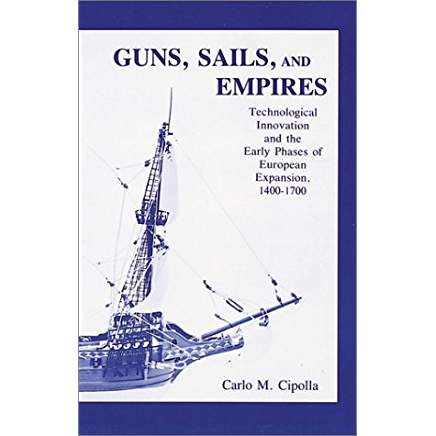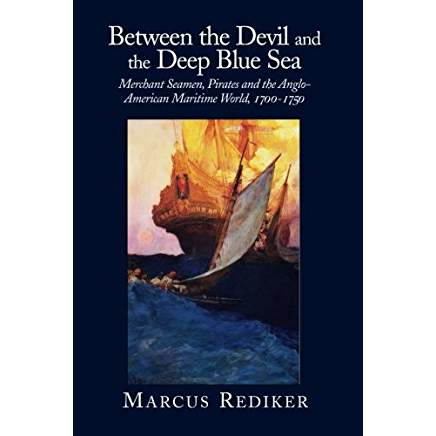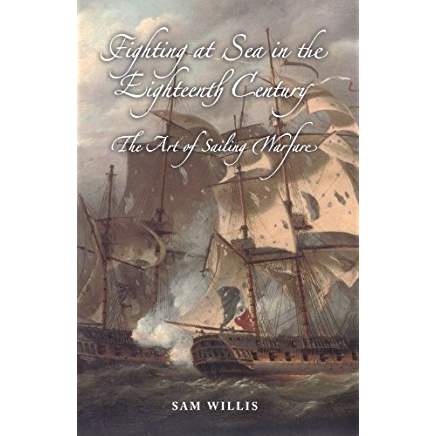By the CIMSEC Sea Control Podcast Team
Happy holidays Shipmates! We’ve have put our heads together for our third annual Holiday Reading List. Below you’ll find a selection of books that we’ve read and enjoyed over the last year and some that we plan on enjoying in the future (and that we think you might enjoy, too). And of course, it should come as no surprise that we’ve interviewed more than a few of the authors we have recommended. Enjoy, and happy holidays from the CIMSEC team to all our readers and listeners!
Joshua Groover
Sea Control Associate Producer
Freaks of a Feather by Kacy Tellessen
The book that started it all, Freaks of a Feather led me down a rabbit hole of memoirs written by Marines. Tellessen, a Marine Corps machine gunner and the alleged only Marine to ever carry a .50-cal receiver the full 20 kilometers during the final hike at the School of Infantry, tells the story of his time in the Marine Corps. He was deployed twice to Iraq and saw significant combat during his first deployment. Tellessen’s relaxed tone and honesty make for an interesting read that grapples with the trials of combat, and its long-term impacts on the individual.
Guns Up! by Johnnie M. Clark
My favorite read this year, Guns Up! follows Johnnie Clark, a Marine Corps machine gunner in the famed 5th Marine Regiment, through the Tet Offensive in Vietnam. The book is a gripping testament to the courage, dedication, and grit displayed by Clark and his fellow Marines during the Tet Offensive – I could hardly put it down when I was reading it!
With The Old Breed by E.B. Sledge
A Marine Corps and American Classic, With The Old Breed puts you in the shoes of E.B. Sledge aka “Sledgehammer” through his time in the Pacific during the Second World War. Sledgehammer served as a mortarman in the 5th Marine regiment. He chronicles the heroism, bravery, and sacrifice shown by Marines fighting in the Pacific, and the horrors and ravaging effects of war through his experiences at Peleliu and Okinawa.
19 Stars by Edgar F. Puryear Jr.
If you are looking for a book on leadership in the military, look no further. 19 Stars documents the “military character and leadership” of generals George S. Patton, Jr., Dwight D. Eisenhower, Douglas MacArthur, and George C. Marshall. The book is informative and provides the reader with excellent templates on how to lead themselves.
To Be Read:
The Fifth Act: America’s End in Afghanistan by Elliot Ackerman
Very excited to read this book given how recent the US withdrawal from Afghanistan occurred. Ackerman is a retired Marine and former CIA paramilitary officer who spent considerable time deployed to Afghanistan. He also played a significant role in the evacuation of Afghan nationals who helped the Coalition in Afghanistan. In the book, Ackerman documents this and other events that occurred in the week leading up to the U.S. withdrawal. The first part of the book sucked me right in – can’t wait to read the rest! Ackerman talked to us for Sea Control 247 about his recent book War in 2034.
Anna McNeil
Sea Control Co-Host
Best Cutters of the Best Coast Guard by The Claw of Knowledge
This much-anticipated Kickstarter project is the author’s second book. Written to honor the crews of the Coast Guard’s most famous ships by connecting their efforts in a long blue line, this effort reflects on just how significant (and often overlooked) an impact each ship can have over the span of their operational service. Illustrated with the plucky sort of self-effacing humor that has endeared the author to Coasties everywhere, this book is nonetheless an extensively researched and smartly assembled account of relatable events given historical context. You won’t want to miss it, and we simply must have the author on the podcast once he or she is ready for a book tour!
Maritime Cybersecurity by Dr. Gary Kessler and Dr. Steven Shepard
This 2022 refresh to the highly regarded original has been well0received by maritime security professionals everywhere. Chock full of case studies and practical content, this is an excellent reference written by experts in their craft. Check out CIMSEC Sea Control Episode 293 to hear from Dr. Kessler and Dr. Diane Zorri on cyber threats and chokepoints.
This is How They Tell Me the World Ends: The Cyberweapons Arms Race by Nicole Perlroth
Recommended to me by an academic well-versed in both engineering and legal disciplines, this New York Times Best-Seller is a journalist’s account of how a single conversation overheard by chance led her down a winding path of intrigue and strategic competition. This book promises to be an interesting read, and to give context to how we have arrived in an era of modern ‘bug bounty’ programs.
The Phoenix Project by Gene Kim, Kevin Behr and George Spafford
This book is a fictional account an Information Technology employee at a big business. You might not think this is for you at first blush, but it was recommended to me when asked IT professionals for a case study on successful ‘steering the boat’ of an enterprise’s security architecture to head in a new direction. If you’d like a pragmatic solution which gives you hope for your own organization’s security architecture challenges, you might want to read this book. Not to be confused with The Phoenix Program.
Red Famine by Anne Applebaum
Recommended to me by a geopolitical analyst as “the best book for understanding Russia’s history of punishing Ukraine, and why Ukraine is fighting so hard to push them back.” An Economist best book of the year.
Walker Mills
Sea Control Co-Host
CIMSEC Senior Editor
Asia’s Cauldron: The South China Sea and the End of a Stable Pacific by Robert Kaplan
After starting with Kaplan’s book Monsoon about the Indian Ocean before a trip to Sri Lanka, I have become a huge fan of Kaplan’s style and read several more of his books. Kaplan’s blend of travel writing and geopolitical analysis make his work easy reading but leave the reader with lasting impressions of foreign lands. Asia’s Cauldron (2014) is just old enough to be prescient and a great place to start for anyone interested in learning more about the complex South China Sea region.
The End of the World Is Just Beginning by Peter Zeihan
Zeihan is a self-professed geopolitical strategist and bestselling author. He writes in an easy-to-read bordering on flippant style that mask a barrage of data that will challenge your preconceptions on economics, geography, security and great power competition. While I didn’t love the style or agree with all of Zeihan’s conclusions, I have spent more time thinking about this book than any other I have read in the past year.
Oil and War: How the Deadly Struggle for Fuel in WWII Meant Victory or Defeat by Robert Goralski and Russell W. Freeburg
After having reread this book for a class at the Naval Postgraduate School, I am again recommending it to everyone I can. Originally written in the 1980s, it is not ground breaking historical research (Adam Tooze’s magisterial Wages of Destruction would be a better bet for that), but it makes abundantly clear the importance of energy, particularly oil, to military operations. Russian logistical incompetence during the initial stage of their invasion of Ukraine make clear how relevant Oil & War remains, and a reprint from Marine Corps University means you can download it for free.
Magdalena: River of Dreams, a Story of Colombia by Wade Davis
After spending the last three years living and working in Colombia, this is one of the best books about the country that I have read. It comes from an unusual source, Wade Davis is a Canadian who fell in love with the country as a student, but sometimes it takes an outside to truly understand and convey the essence of a place. The book is really an explanation of modern Colombia with the narrative following the Magdalena River from its source in Central Colombia to the Caribbean – passing not only through the stunning landscape of Colombia and it’s rich history, but also all of the strife, conflict, and tragedy that have shaped the country over the last 500 years.
To Be Read:
Adriatic: A Concert of Civilizations at the End of the Modern Age by Robert Kaplan
Adriatic is Kaplan’s most recent book (2022) and it is part travelogue and part memoir, with a healthy dose of Kaplan’s reminisces about the region. After enjoying several of his other books like Balkan Ghosts, Asia’s Cauldron, and Monsoon, I can’t wait to tear into his newest work and I’m stoked that it’s centered around a body of water.
Victory at Sea: Naval Power and the Transformation of the Global Order in World War II by Paul Kennedy
Victory at Sea is one of those books that I’ve heard so much about but have not been able to read yet. I just picked up a copy and I’ve already take some time to look at the beautiful illustrations by Ian Marshall. If you want a teaser or a recap, we did a great episode with Dr. Kennedy about his book for Sea Control 378.
Jared Samuelson
Sea Control Executive Producer
Adrift: The Curious Tale of LEGO Lost at Sea by Tracey Williams
My wife started laughing the instant I took this book out of its packaging: “This is literally all of your interests in a single book.” She was correct and you can listen to the podcast we did with Tracey, Sea Control 340, is great. It’s as much a scrapbook as it is a book, including beautiful maritime art, pictures of Tracey’s own finds, and poetry. There are also informative sections on the long-term impact of plastic on our oceans.
On Wide Seas by Claude Berube
Dr. Berube is one of the most vocal CIMSEC supporters and a phenomenal Sea Control guest, but that’s not why his book is here. He’s used the book to produce a study of the U.S. Navy in the 1830s, a period overshadowed by the War of 1812 and American Civil War. There’s a particular focus on Andrew Jackson’s relationship with the Navy, technical developments and the intellectual growth of the Navy’s officer corps.
Underwriters of the United States: How Insurance Shaped the American Founding by Hannah Farber
“I went looking for adventure, and instead I found insurance,” was how Dr. Hannah Farber explained her research for this book when she joined us on Sea Control 380. The extent to which marine insurance impacts international trade and economic relationships has become more obvious as a result of the invasion of Ukraine and subsequent negotiations over Black Sea grain, but before that it played a critical role in the birth of the United States.
Cats in the Navy by Scot Christenson
You’re going to approach this book expecting a lot of pictures of cats on ships, and you won’t be disappointed. But amongst all the stills of cats lounging in adorable hammocks, there’s a lot of information packed in: the reason cats started going to sea, cats as a recruiting tool, superstitions, and more. Coming to a Sea Control episode near you!
Working Boats – An Inside Look at Ten Amazing Watercraft by Tom Crestodina
A spectacular addition to any children’s book collection. Incredible detailed artwork by the author and great explanations for all sorts of shipboard gear. If you’ve ever struggled to explain to a younger relative what it’s like to go to sea, this book will help start a conversation with some immersive visual aids.
To Be Read:
Forging Wargamers: A Framework for Professional Military Education Edited by Sebastian Bae
Sebastian is going to read this and shoot me a note written with the tone a disappointed grandfather would use when addressing his grandson who broke a garage window. I will get to it and it looks excellent! One other great benefit to this book: because it’s published by Marine Corps University Press, it’s free! Click that hyperlink. The whole thing is there! Sebastian has been a repeat guest on the Sea Control podcast.
Marie Williams
Sea Control Associate Producer
The Constitution of Knowledge by Jonathan Rauch
This book is about the epistemic crisis in our public life. “How we know what we know.” How our shared social knowledge matters. And how our institutions matter. Writing in clear, easy prose, Rauch makes a strong case for both defending democracy and not losing touch with reality (it never works out well, he writes). I came away feeling armed, at least in my mind, for modern information warfare.
Dmitry Filipoff
Director of Online Content
Dying to Learn: Wartime Lessons from the Western Front by Michael Hunzeker
Wartime learning and adaptation is a convoluted but necessary business. Militaries need to do their absolute best to properly understand and adapt to future war in peacetime, but many concepts and capabilities will break in the naturally unforeseen chaos of conflict. Institutions must be well-designed to translate combat lessons into rapid military reform in the midst of pressing combat operations. Michael Hunzeker’s Dying to Learn is a gripping analysis of wartime learning in WWI and lays out how the various powers on the Western Front adapted their doctrine and their institutions during the course of great power war. Hunzeker assesses the fundamental building blocks of effective force development, including centralized training, decentralized experimentation, and how leaders properly manage these functions. All modern militaries can benefit greatly from these insights and mitigate the extent to which their warfighting methods will collapse in future combat crucibles. Read CIMSEC’s interview with Hunzeker on Dying to Learn here.
The Inheritance: America’s Military After Two Decades of War by Mara Karlin
There are plenty of books on the Global War on Terror, yet few if any have systematically attempted to capture the comprehensive impact these conflicts have had on the U.S. military. After having served in civilian national security roles for five different Secretaries of Defense, Mara Karlin is well-positioned to understand how the military has been deeply affected by the Global War on Terror. Karlin interviewed more than 100 individuals for this book, most of whom served as senior general and flag officers during the Global War on Terror. They offered their candid and deeply personal perspectives on the legacies of this conflict. But The Inheritance reveals much more than the personal psychological scars of these wars, which have considerable policy implications. It highlights the fault lines that have emerged between American society and its military, and the military and its civilian masters, which may pose significant consequences for how America will go to war in the future.
Collin Fox
CIMSEC Senior Editor
Victory at Sea: Naval Power and the Transformation of the Global Order in World War II by Paul Kennedy
The Allure of Battle: A History of How Wars Have Been Won and Lost by Cathal J. Nolan
Victory at Sea is a brilliant and beautifully illustrated capstone on Kennedy’s classic, The Rise and Fall of the Great Powers. It traces the rise of the U.S. Navy through the Second World War to unrivaled dominance in the post-war era. The Allure of Battle is a millennium-spanning survey of mostly land wars. Despite their differing scope and focus, both books converge toward a similar compelling thesis: The outcome of war is usually decided by the latent strength and endurance of the belligerents. Novel technologies, innovative tactics, brilliant commanders, and pitched battles are interesting and often exciting, but both books argue persuasively that these factors rarely decide the final outcome of a war. Factors of national power and geography are presented as far more predictive of victory and defeat. Also be sure to check out Sea Control 378 with Dr. Kennedy.








